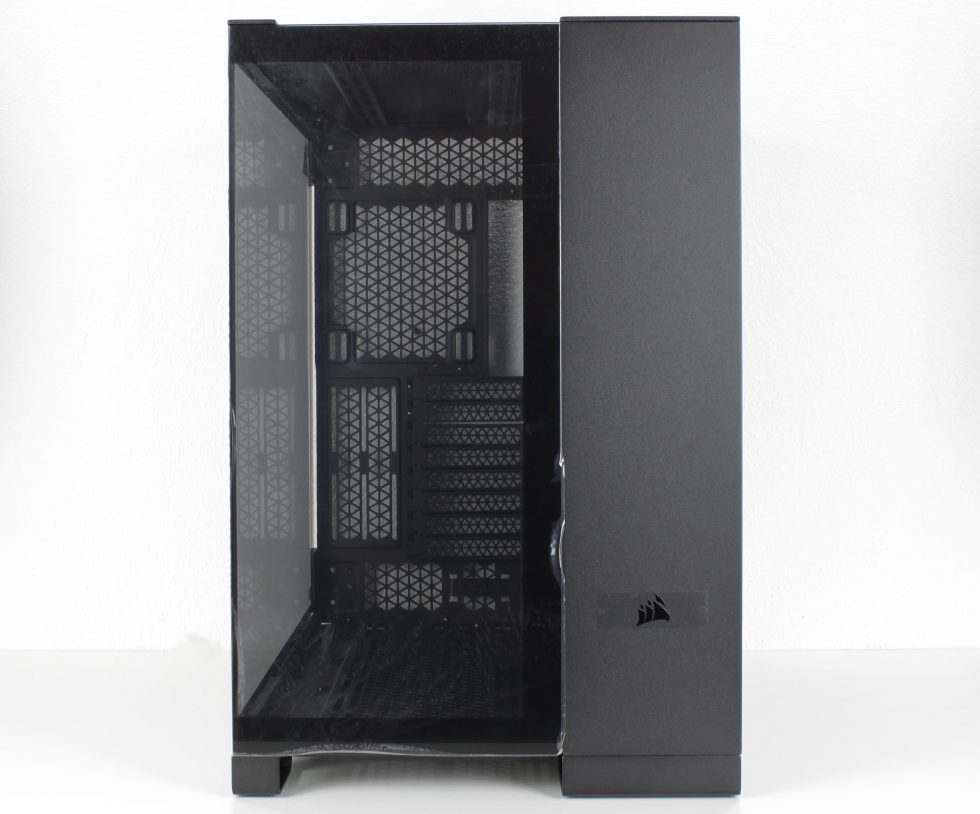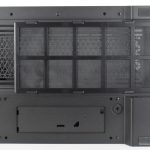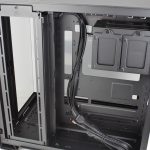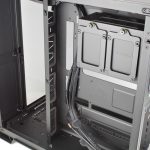After a long delay, today we are taking a look at the new dual-chamber case from Corsair, which generates powerful Carbide Air 540 vibes. As I also installed the XH405i RGB Hard-Tube Watercooling Kit as part of the test, you can expect plenty of pictures. So better get a large coffee to read the article today.
To be precise, it was the Corsair Carbide Air 540 that rekindled my passion for PC building almost 10 years ago. Before that, I had only used Chieftec Bigtowers for over a decade, with a brief detour to the Cooler Master Mystique with an externally mounted radiator in between. When no really exciting CPUs came from AMD for a long time and I was able to enjoy all new games in maximum quality “forever” with the GTX 560 Ti, which was already getting on in years, the PC hobby had pretty much fallen asleep. And suddenly there it was. The Carbide Air 540, on the desk of a fellow student where we had met to study. We quickly discarded the actual topic and it was all about computers. A short time later, the case was also on my desk and the PC spiral continued:
What does all this have to do with the Corsair 6500? Quite simply, the Air 540 had to go back then because it simply couldn’t keep up with the new “fancy” RGB glass cases with its Plexiglas side panel and lack of modern features. I did miss the spacious cube from time to time and the official successor, the Crystal 680, didn’t fully convince me. The 6500, on the other hand, even though it smells suspiciously of O11 Dynamic once again, seemed to me to be a worthy successor to the good old Air 540 and because I was so euphoric about the test, we let it fly right away and installed the new XH405i RGB Hard-Tube Watercooling Kit. But before we get to the technical data and the water cooling kit, let’s first take a look at the case.
Unboxing
The box gives no indication of the contents.
Let’s take the 6500X out of its packaging and take a look at it from all sides. The left side panel is made entirely of glass.
The front of the 6500X (RGB) is closed with a glass panel, while the 6500D Airflow would have a grille instead of a glass panel.
The right-hand side panel is made entirely of mesh on all variants and is therefore very airy.
There have also been some changes to the rear compared to the 540 Air, but above all the available space has been used much more efficiently. We will take a closer look at the details later.
There’s not much to see on the floor. The “feet” (you could almost call them “supports”) can be unscrewed and the large dust filter can be pulled out to the front – very easy to maintain.
On the lid we find the lush front I/O, which leaves nothing to be desired: 4 x USB 3.0, 1xUSB-C, power and reset button and a 3.5mm combo jack is also available.
The mesh cover is simply clicked into place and can be removed in no time at all. There is space for three 120/140mm fans underneath, but there is no additional dust filter at this point.
The other covers can also be removed. They are hooked in and fixed at the back with screws. They can be replaced by visually appealing wooden covers, which can be purchased in the Corsair store. Unfortunately, these were not yet available at the time of testing, but I will present the variations in the course of the article.
This also applies to the panel at the front, which is screwed on from behind.
The mesh side panel is equipped with knurled screws that do not fall out.
The rear is fully equipped with a dust filter, the removable frame is probably intended to take on a “sealing” function if fans for a side-mounted radiator are installed here.
Unobstructed view of the rear chamber. Very spacious at first glance!
We have a depth of over 10 cm across the entire chamber, which means we can hide plenty of cables and small devices such as RGB controllers!
The drive cage is already familiar in this form from other cases. Two 2.5″ drives can be mounted on the side. Two further 2.5″ or 3.5″ drives can be mounted on slots that can be pulled out of the housing from the rear without having to open the housing itself. Of course, the cage can also be removed completely.
The support for side-mounted radiators can be removed by loosening a single screw.
There is also a removable partition plate on the side, which is probably intended to prevent the air from the “power supply chamber” mixing with the supply/exhaust air from the radiator.
We can only guess what the outlet under the power supply unit is intended for. Perhaps a connection for external iCUE-Link devices can be fitted here in the future?






























































31 Antworten
Kommentar
Lade neue Kommentare
Mitglied
Mitglied
Urgestein
Mitglied
Urgestein
Mitglied
Urgestein
Urgestein
Veteran
Mitglied
Urgestein
Urgestein
Moderator
Urgestein
Urgestein
Urgestein
Moderator
Urgestein
Mitglied
Alle Kommentare lesen unter igor´sLAB Community →